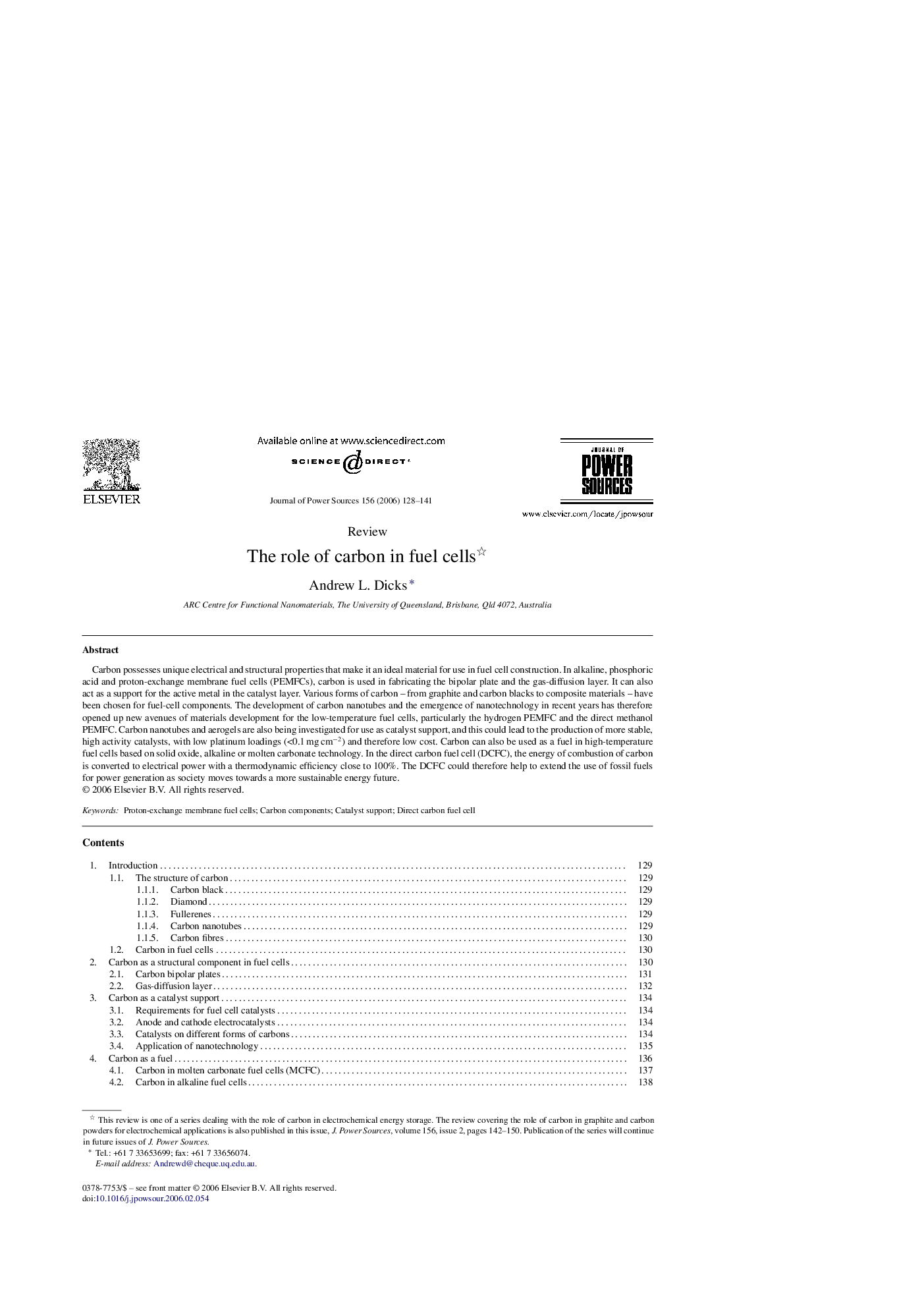| کد مقاله | کد نشریه | سال انتشار | مقاله انگلیسی | نسخه تمام متن |
|---|---|---|---|---|
| 1295011 | 973654 | 2006 | 14 صفحه PDF | دانلود رایگان |

Carbon possesses unique electrical and structural properties that make it an ideal material for use in fuel cell construction. In alkaline, phosphoric acid and proton-exchange membrane fuel cells (PEMFCs), carbon is used in fabricating the bipolar plate and the gas-diffusion layer. It can also act as a support for the active metal in the catalyst layer. Various forms of carbon – from graphite and carbon blacks to composite materials – have been chosen for fuel-cell components. The development of carbon nanotubes and the emergence of nanotechnology in recent years has therefore opened up new avenues of materials development for the low-temperature fuel cells, particularly the hydrogen PEMFC and the direct methanol PEMFC. Carbon nanotubes and aerogels are also being investigated for use as catalyst support, and this could lead to the production of more stable, high activity catalysts, with low platinum loadings (<0.1 mg cm−2) and therefore low cost. Carbon can also be used as a fuel in high-temperature fuel cells based on solid oxide, alkaline or molten carbonate technology. In the direct carbon fuel cell (DCFC), the energy of combustion of carbon is converted to electrical power with a thermodynamic efficiency close to 100%. The DCFC could therefore help to extend the use of fossil fuels for power generation as society moves towards a more sustainable energy future.
Journal: Journal of Power Sources - Volume 156, Issue 2, 1 June 2006, Pages 128–141